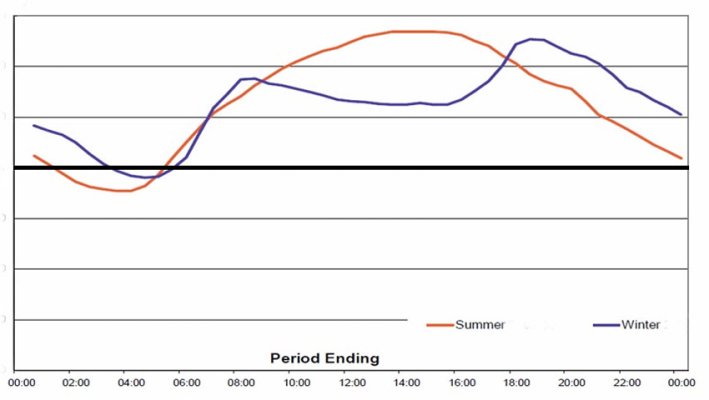Base load plants aren't typically run at less than full capacity. They are generally running at full power if they aren't down for maintenance or repairs.
It doesn't pay to build more base load power than needed. Most of the time all of the available coal plants will be running full speed and they will have an intermediate load plant running to cover variability in the demand. Here is an example from Wisconsin (look at Fig 1 on page 3)--
http://psc.wi.gov/thelibrary/publications/electric/electric04.pdf
There is almost always some power being produced beyond the base load. In the winter it is just the intermediate load plants, and then in the summer they add peakers as well.
Note this quote--
"Base load plants operate almost continuously (approximately 70 to 80 percent of the time), except when down for scheduled maintenance, repairs, or unplanned outages. They take a long time to ramp back up to full capacity and have limited to noability to vary their output of electricity."
They don't just feed more coal into a plant when demand picks up. They are always trying to feed the coal in at full speed.
It doesn't pay to build more base load power than needed. Most of the time all of the available coal plants will be running full speed and they will have an intermediate load plant running to cover variability in the demand. Here is an example from Wisconsin (look at Fig 1 on page 3)--
http://psc.wi.gov/thelibrary/publications/electric/electric04.pdf
There is almost always some power being produced beyond the base load. In the winter it is just the intermediate load plants, and then in the summer they add peakers as well.
Note this quote--
"Base load plants operate almost continuously (approximately 70 to 80 percent of the time), except when down for scheduled maintenance, repairs, or unplanned outages. They take a long time to ramp back up to full capacity and have limited to noability to vary their output of electricity."
They don't just feed more coal into a plant when demand picks up. They are always trying to feed the coal in at full speed.
I don't think your explanation holds water.
On the plus side for EVs, most of them would be charged overnight which is not a peak time. So the impact on the infrastructure is minimal, you don't need more/thicker wires to each neighborhood, those are already sized for daytime/AC peaks. So at night, they are not using 'peaker' plants at all - they rely on the baseline (coal, nukes and some hydro - mostly coal). But they would need to feed more coal to those plants to provide a higher average power at night.
It doesn't take more coal plants, it just takes feeding the existing plants more coal at night. If I were the owner/manager of a power plant, there is nothing I would like more than increasing consumption during non-peak hours. That's where the money is. Just some incremental fuel costs on all that expensive infrastructure. I can smell the money!
-ERD50

